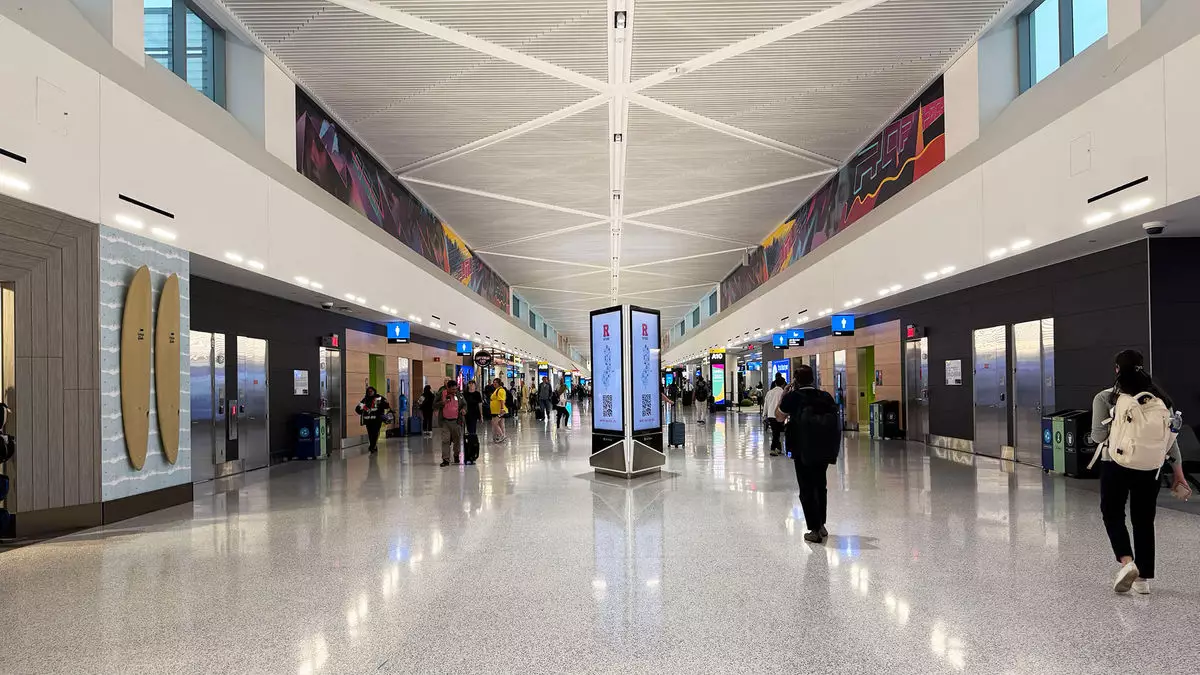The recent reopening of Newark Liberty International Airport’s runway 4L-22R is a significant milestone, indicative of a larger shift in air travel dynamics. Initially scheduled for a lengthy renovation period, the Port Authority of New York and New Jersey managed to complete the repairs nearly two weeks ahead of time. This expedited reopening could herald a new chapter for Newark Liberty, which has suffered from operational setbacks that compounded its notoriety during peak travel times.
Closed since April 15, the runway’s absence left Newark with severely limited options, constraining its operations to just two runways. This forced the airport into a precarious situation fraught with delays, cancellations, and frustration for travelers. The situation was exacerbated by a communication blackout at the air traffic control center near Philadelphia, further snowballing into chaos. These incidents highlighted a critical vulnerability in Newark’s capacity to manage air traffic efficiently, raising concerns among airlines and passengers alike.
A Collaborative Effort Towards Improvement
The Port Authority’s proactive response was commendable. By ramping up construction efforts—including increasing work shifts and bringing in additional crews—the organization managed to accelerate the repairs significantly. Executive Director Rick Cotton’s determination to complete the project sooner than planned demonstrated a commitment to minimizing disruptions and improving the airport’s overall capabilities. The urgency to address Newark’s operational hiccup is undoubtedly commendable, but it also raises questions about the maintenance and management of our nation’s aviation infrastructure.
Additionally, the collaboration between the FAA and United Airlines showcased a collective effort to alleviate congestion. United’s decision to cut back on daily flights was a strategic move, reflecting airlines’ recognition of their role in enhancing passenger experience through operational efficiency. With the FAA capping operations, a more reliable travel experience appears to be on the horizon for Newark. However, it is crucial to question whether this sort of reactive strategy is a sustainable solution to an ongoing issue.
Addressing Passenger Needs Through Reliability
United Airlines CEO Scott Kirby’s assertion that Newark could become “the most reliable” of New York’s airports this summer is both optimistic and revealing. The improvements, he notes, correlate with a substantial drop in bookings, which also has resulted in lower fares. This multifaceted situation speaks to broader trends in the airline industry, where reduced capacity during recovery from the pandemic has driven prices down, even as passengers gear up for summer travel.
What is most intriguing, however, is the potential for this runway improvement to redefine passenger expectations. Fewer delays and cancellations mean increased consumer trust; after all, reliability is the key to customer loyalty in any industry. The improvements being implemented may not only restore the normalcy of air travel but could also reshape how travelers perceive Newark Liberty. If the airport sees a tangible uptick in reliability, it may entice more travelers to consider Newark as their primary airport, potentially diverting traffic away from other, historically busier options.
The Bigger Picture: Towards Future Readiness
The $128 million renovation featured comprehensive upgrades, from more effective drainage systems to advanced LED lighting. While these improvements will create a safer and more efficient operational environment, they also reflect the pressing need for airports across the country to modernize their infrastructures. Newark Liberty could act as a benchmark for other airports struggling with capacity issues and aging facilities, underscoring the necessity for strategic investment in infrastructure.
Ultimately, as air travel gradually rebounds, Newark Liberty’s challenges—and their solutions—present an opportunity for growth not just for the airport but for the entire aviation industry. Moving forward, the combination of improved reliability and strategic capacity management may serve as a model, facilitating a transformation in how air travel is experienced. It’s a delicate balance, but if done correctly, travelers may find themselves benefitting from a new era of aviation—one characterized by efficiency, reliability, and economic accessibility.


Leave a Reply